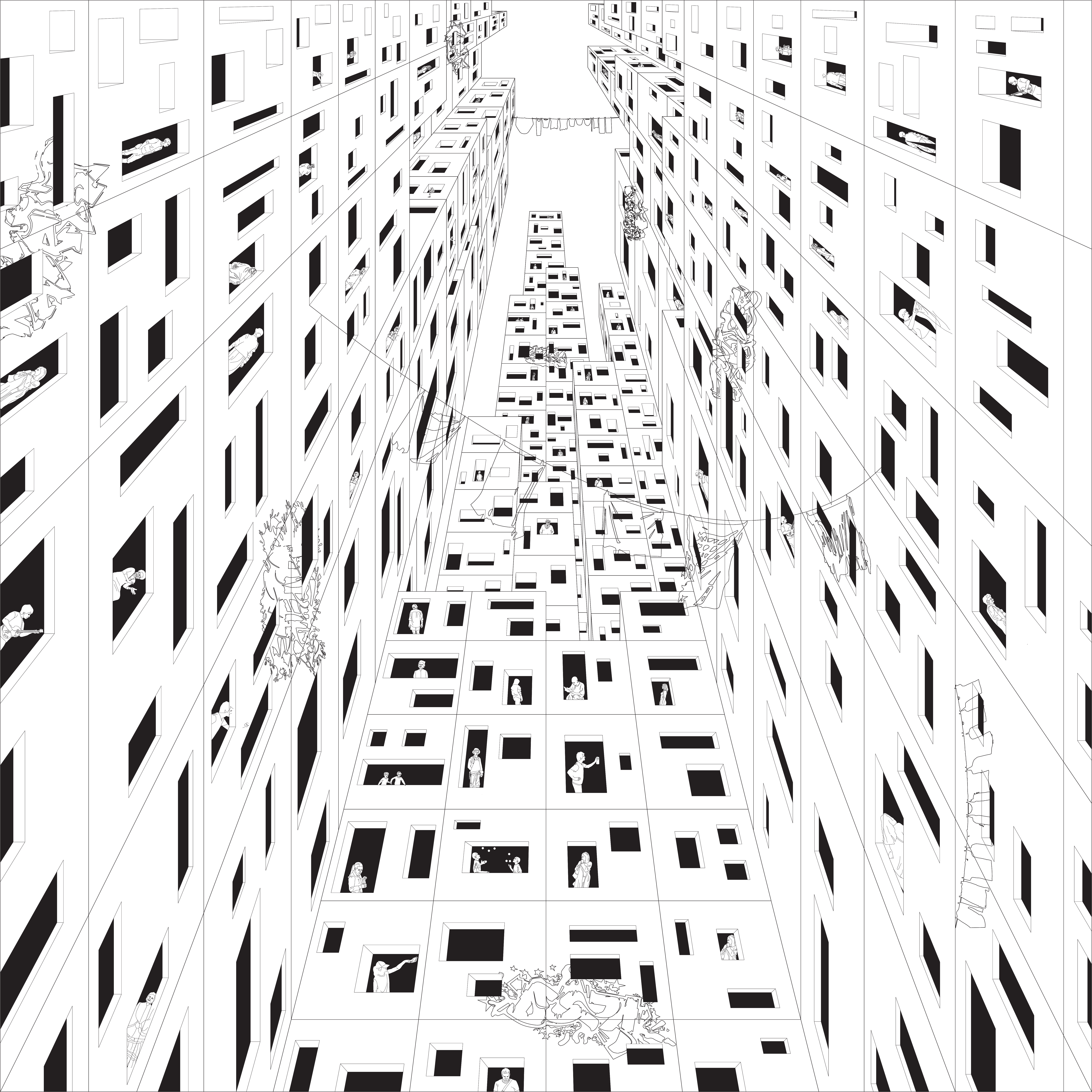Digital
In a country with political turmoil, the cities exude the dichotomies between social and economic classes.

In the Divided City, there is a physical division of two classes, seen at opposite sides of a waterbody. It reinforces the separation of high-rise buildings and densely packed slums. The organization of struc-tures, which is severely contrasting, alludes to the underlying economic disparities of the residents. While the main city was planned, the slums are an informal settlement where most of the population resides. Here, the winding paths aren’t made of concrete and the houses don’t have gardens or terraces.

In the Divided City, the slums are described as an unfortunate part of the city or are simply ignored. Stacked one on top of the other, the highly populated and closely packed homes surround the main city and grow at the same rate as the country withers. While many wonder at the riches of the few, it is in the marginalized slums that beauty holds its place. In this part of the city, community is valued, colors are brighter, differences between people are blurred, and the constant activity makes it impossible to turn away.

In the Divided City, inhabitants of skyscrapers and villas superimpose themselves on top of the proletariat, completely disregarding, looking down on, and oppressing the distressed slums. Contained in their designated area of the city due to stark economic dichotomies, the most impoverished can’t even at-tempt to escape their situation while the richest become richer at their expense.

In the Divided City, the social and economic divisions are deeply rooted. Cutting through the center exposes that the disparities aren’t only on the façade but are engraved in the way in which spaces are organized and used. Planned and industrialized, he city skyscrapers have a very rigid order and ex-pose opulence. Built on top of the mountains, where they were exiled to, the slums are much more dy-namic and varied and expose tightness and density.

In the Divided City, contrast of the rich and the poor is seen through architecture and city structure. Through axonometrics, plans, and elevations, the different aspects of urbanization in the slums and main city can be appreciated fully. Disorder, density, and informality characterize the slums, built by hand, using scrap materials, and erected by their own inhabitants. Order, open space, and luxury can be seen in the skyscrapers and villas of the main city, where the 1% of the population are allowed to detach them-selves from the realities of their country.
Although they deal with individual aspects of the city, these five drawings unite in their critique of how the issues of politics and economics are expressed in third world country, specifically through urbaniza-tion. Deep inequality has facilitated a segregation of the city, which has misdirected its order and grandeur in only a small sliver, where the higher classes reside. Here, highways or skyscrapers are built, mean-while, the real beauty has been focused in the disorder of the ever-growing informal slums.
